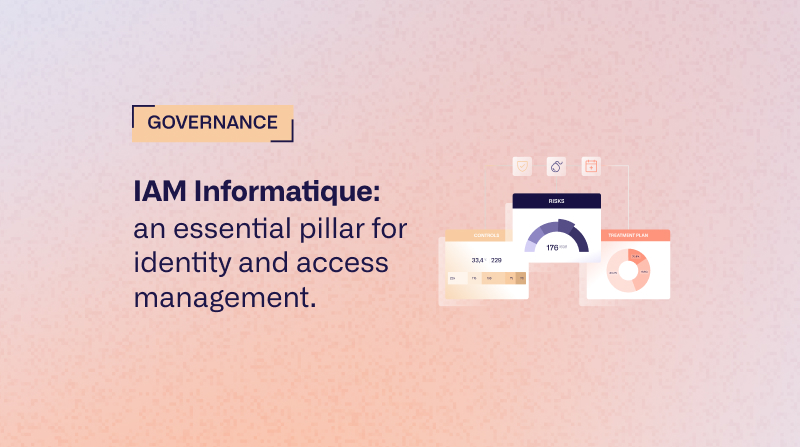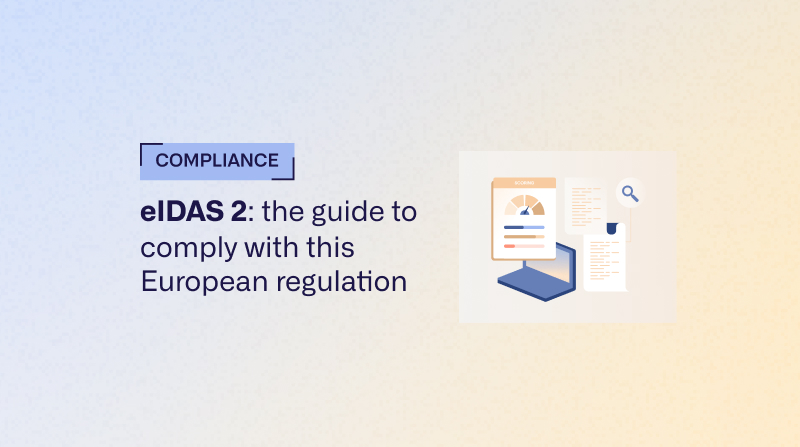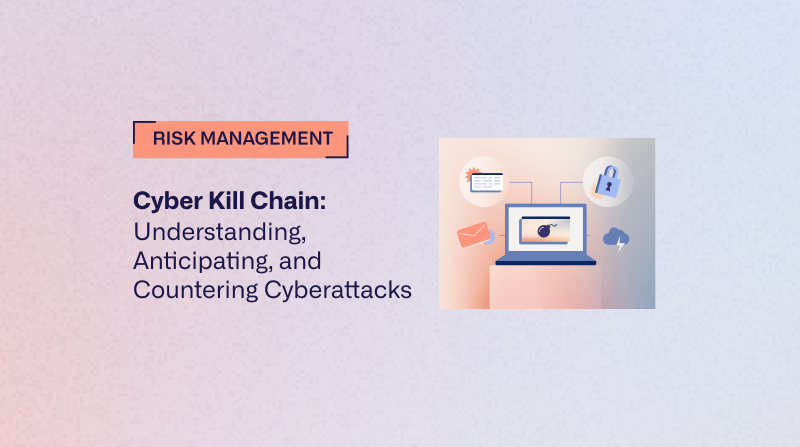IAM Informatique: an essential pillar for identity and access management.
This practical guide describes the challenges, methods and concrete solutions to effectively protect your company's accesses, identities and resources. Let's take stock of identity and access management in line with your cybersecurity obligations.
Computer IAM (Identity and Access Management) brings together all the tools and methods for managing digital identities and controlling access in an information system.
It is a pillar of modern cybersecurity, ensuring that the right users are accessing the right resources at the right time. For a company, IAM is not just a technical issue; it is an essential tool for cyber governance. Poorly controlled, this domain exposes your organization to major risks, from data breaches to unauthorized access.
IAM Informatique: what is the interest for your cyber governance?
Computer IAM is a discipline that helps manage digital identities and user access rights within an information system. It ensures that only authorized employees, partners, or customers can access specific applications and data, based on their roles, access levels, and responsibilities.
For a person whose role is that of information systems security manager (CISO) Or that of Risk manager, understanding IAM is absolutely crucial. In particular to strengthen security, meet compliance requirements, and optimize business operational processes.
A robust IAM strategy fits perfectly into a global approach to Cyber Security GRC, where access control becomes a quantifiable risk treatment measure. By defining who can do what, where and when, you transform an abstract concept of security into an active and measurable protection policy.
What is IT IAM and what is its role for the business?
IT IAM is a set of policies and technologies that provide centralized identity and access management. Its main objective is simple: a unique digital identity per individual, whose secure accesses are governed throughout their life cycle within the organization.
IT IAM: the essential function of identity management
The first component of IAM is the identity management. It concerns the origination, the maintenance And the suppression Of user accounts for all people and entities (humans, services, devices) that need access to the information system. Each user is assigned a unique digital identity, often stored in a central directory.
This process ensures that each account is linked to an identifiable individual, which is fundamental to traceability and accountability. Without clear identity management, a company is exposed to “orphan accounts” (accounts of former employees who are still active) or to duplicate identities... So many potential entry doors for attackers.
Access control: a question of rights and authorization
The second component is access management (Access Management). Once a user is authenticated, this function determines what resources they can access and what actions they are allowed to perform. This control is based on specific authorization policies.
The three pillars of access management are:
- THEauthentication : it is the process that verifies that the user is who they say they are. This usually involves a password, but is becoming increasingly stronger with multi-factor authentication (MFA), which combines several verification methods.
- THEpermission : once authenticated, the system grants the user specific rights. For example, a sales representative may have permission to view customer data but not be allowed to edit or delete it.
- Traceability : the system records user activities (connections, file access, changes). These access logs are essential for detecting anomalous behavior and conducting investigations in the event of a security incident.
Access management is at the heart of safeguarding Of data Sensitive And apps reviews of the company.
Why is an IAM system essential to the security of your data?
Deploy a IAM system is no longer an option, but a necessity for any organization that cares about its security and efficiency. The benefits go well beyond simple password management. Explanations.
Enhance security and reduce the risk of breaches
A well-configured identity and access management system is your first line of defense against cyber threats. By applying the principle of least privilege, you ensure that users only have access to information that is strictly necessary for their functions. This limits the attack surface considerably.
In the event of an account being compromised, the damage is contained, as the attacker will not be able to move laterally through the network to access more critical resources. IAM also allows for instant access revocation when an employee leaves the company, eliminating a common risk of data breaches. A good risk analysis Upstream will systematically highlight weaknesses in access management as well as critical vulnerabilities.
Improving operational efficiency and user experience
A centralized IAM system automates numerous manual and time-consuming processes for IT, such as creating accounts, resetting passwords, or changing rights.
The employees gain in productivity thanks to mechanisms such as the Single Sign-On (SSO), which allows them to access multiple applications with a single set of identifiers.
This fluidity improves theuser experience while maintaining a high level of security. New employees are up and running more quickly, and access support requests are significantly reduced.
Ensure regulatory compliance for your organization
Numerous regulations (RGPD, DORA, NIS 2, PCI-DSS, etc.) impose strict control over access to personal and sensitive data. An IAM system provides the tools needed to enforce and prove this compliance. With detailed audit logs, you can demonstrate in just a few clicks which people accessed what information and when.
Achieve a compliance audit thus becomes much simpler with an IAM solution in place. The modeling of access controls in a cybersecurity management platform such as Egerie makes it possible to visualize the coverage of these regulatory requirements and to identify discrepancies. You can then prove that your identity management is in line with your legal obligations.
Request a demo as of today.
How to implement effective identity and access management?
The implementation of an IAM solution is a structuring project that requires a clear methodology. Apart from the purely technical deployment of a tool, it is a question of rethinking all of your company's processes around identity management.
1. Define a clear strategy and policies
Before choosing a solution, it is essential to define your IAM strategy. This starts with identifying critical resources to protect, the different types of users (employees, contractors, administrators), and the risks associated with each profile. You need to formalize security policies clear:
- Password policy : complexity, length, frequency of renewal.
- Role Management Policy (RBAC): define typical profiles (e.g. “Accountant”, “Developer”) with preconfigured sets of rights.
- Identity lifecycle processes : what happens when a user arrives, moves internally or leaves?
- Fee Review Policy : how often should managers validate their teams' access?
This governance stage is fundamental and must involve all stakeholders: businesses, HR and the IT department.
2. Choosing the right IAM solutions adapted to your needs
The market for IAM solutions is vast. There are specialized tools for each function. Which one to choose depends on the maturity, size, and infrastructure of your business (on-premise, cloud, hybrid).
- IGA : these solutions focus on governance such as role management, approval workflows or rights recertification campaigns.
- AM : these tools manage authentication, SSO, MFA, and the application of access policies in real time.
- WFP : specifically designed for the management of privileged accounts, these solutions track and control the actions of system administrators, which represent a high risk.
A thorough needs analysis is required to select the right cybersecurity software. Moreover, a successful IAM project relies as much on technology as on governance. Involving professionals from the design stage guarantees sustainable adoption.
3. Implement the principle of least privilege
The principle of least privilege states that a user should have only those rights that are strictly necessary for the performance of their tasks. It is a simple concept in theory, but complex to implement.
The most effective approach is the Role-Based Access Control (RBAC). It consists of creating roles based on business functions and assigning rights to these roles rather than to individual users. When a new employee arrives, simply assign him the role corresponding to his position so that he automatically gets the right accesses. This method simplifies management, reduces errors, and makes audits easier.
4. Automating the identity lifecycle
Automation is the key to secure and effective identity management. The ideal is to interface your IAM system with your human resources information system (HRIS).
- Onboarding : when a new employee is created in the HRIS, his user account is automatically provisioned in the necessary applications, with the rights corresponding to his role.
- Internal mobility : in the event of a change of position, his rights are automatically updated. Old accesses are revoked and new ones are granted.
- Departure : as soon as his departure is recorded in the SIRH, all his accesses are instantly and automatically deactivated throughout the information system. This is in order to avoid any future intrusion.
This automation eliminates the risks associated with manual processing times and ensures that the access situation always reflects the reality of the organization.
5. Supervise and audit accesses on an ongoing basis
Identity management is not a one-time project, but an ongoing process. Monitoring access and conducting regular audits is crucial to ensure policies are respected and still relevant.
- Recertification campaigns : Periodically ask managers to validate the access rights of their team members. The IAM tool can automate this request and follow-up process.
- Anomaly monitoring : Use analytics tools to detect suspicious behavior, such as logins at unusual times, multiple attempts to access unauthorized resources, or the use of privileged accounts outside of intended ranges.
- Role review : regularly check that the roles defined in your RBAC model are still adapted to the needs of the businesses and that they do not accumulate excessive rights over time (“privilege creep”).
An e-governance management platform like Egerie helps you centralize the vision of these access risks. By modeling your assets, users, and potential threats, you're making informed decisions to strengthen your security posture.
Ask for a personalized demo now.
IT IAM FAQ
This section answers frequently asked questions about identity and access management, to help you better understand its challenges.
What is the difference between IAM and PAM?
- IAM (Identity and Access Management) is the general field that covers the management of all identities and accesses within an organization.
- PAM (Privileged Access Management) is a sub-discipline of IAM that focuses specifically on securing, controlling, and monitoring privileged accounts. These accounts (system administrators, service accounts, superusers) have extensive rights and are a prime target for attackers. PAM is putting in place additional controls for these critical identities. These include recording sessions, managing one-time passwords, or approval workflows for using rights. PAM is therefore an essential component of a mature IAM strategy.
What is multi-factor authentication (MFA)?
Multi-factor authentication (MFA) is a security mechanism that requires a user to provide at least two separate proofs of identity to log in. This evidence falls into different categories:
- Something you know (a password, a PIN code).
- Something you own (a smartphone via an authentication application, a physical security key).
- What you are (a fingerprint, facial recognition).
MFA increases security considerably because even if an attacker steals your password, they won't be able to access your account without the second factor. Today, it is an indispensable best practice for account protection.
What is Single Sign-On (SSO)?
Single Sign-On (SSO) is a feature of an access management system that allows a user to log in only once with a single set of identifiers to access multiple applications and services. After the first authentication, the IAM system transparently manages the authentication to other applications without requiring the user to re-enter the password.
SSO improves productivity and the user experience while increasing security. Indeed, users no longer need to remember dozens of passwords (which often pushes them to use weak passwords or reuse them), and the company can centralize and strengthen the single authentication point, for example by requiring MFA.
Is the “Zero Trust” model replacing IAM?
No, the model Zero Trust does not replace IAM, it reinforces and builds on it. IAM is one of the fundamental pillars of a Zero Trust architecture.
The principle of Zero Trust is “never trust, always check.” This means that no entity, internal or external to the network, is trustworthy by default. Each access request must be strictly authenticated and authorized, every time.
To do this, the system must know exactly who (identity) is requesting access and check if it has the upright (permission) to do so. That is exactly the role of the IAM. An effective zero trust strategy is based on mature, dynamic, and contextual identity and access management.








